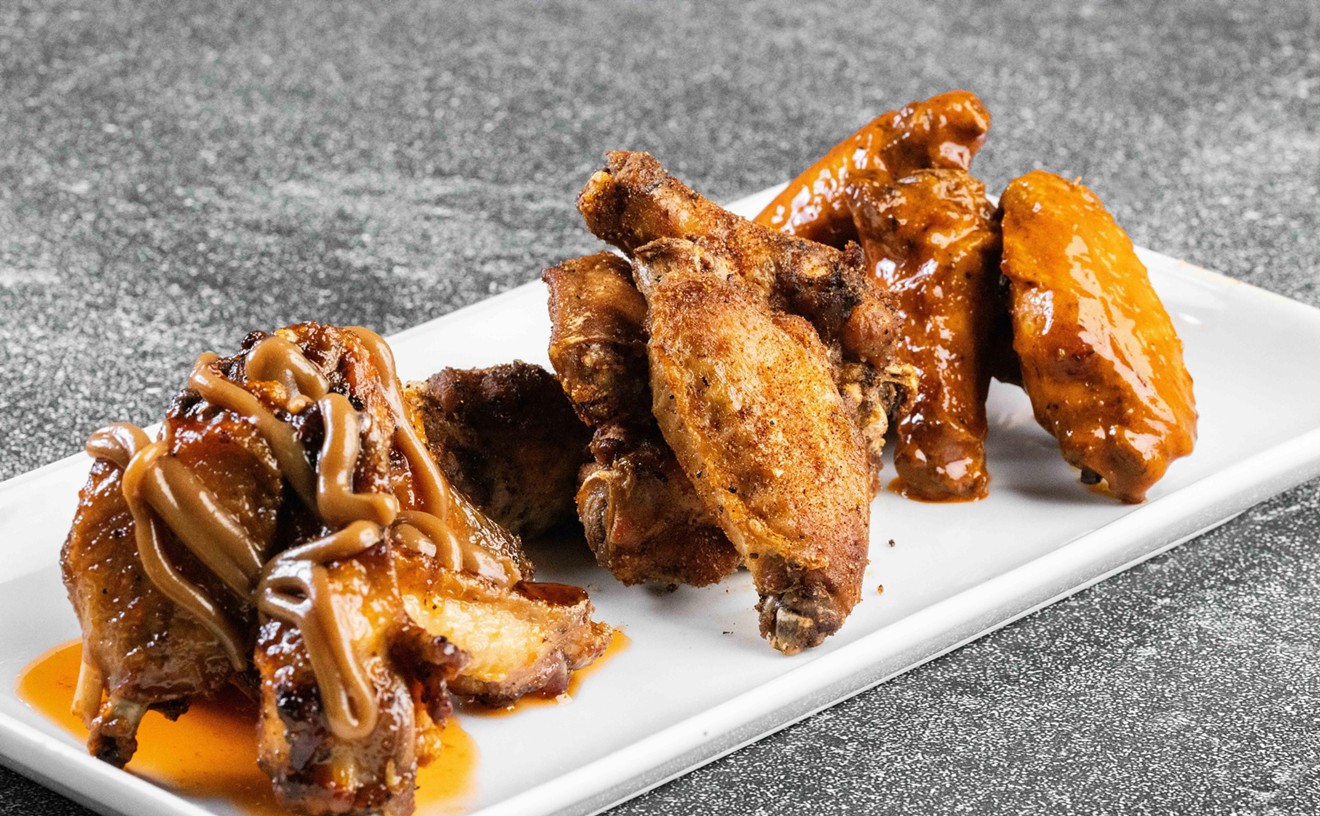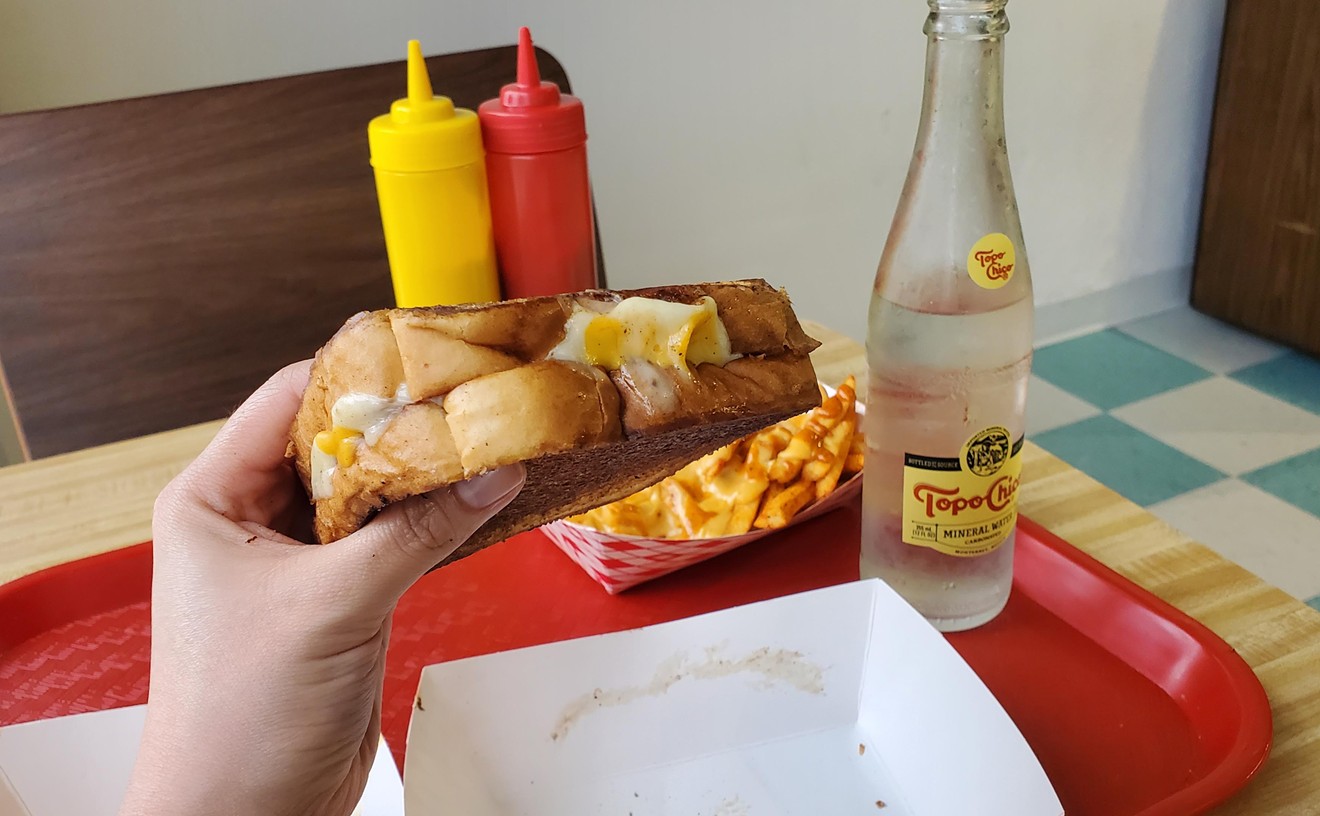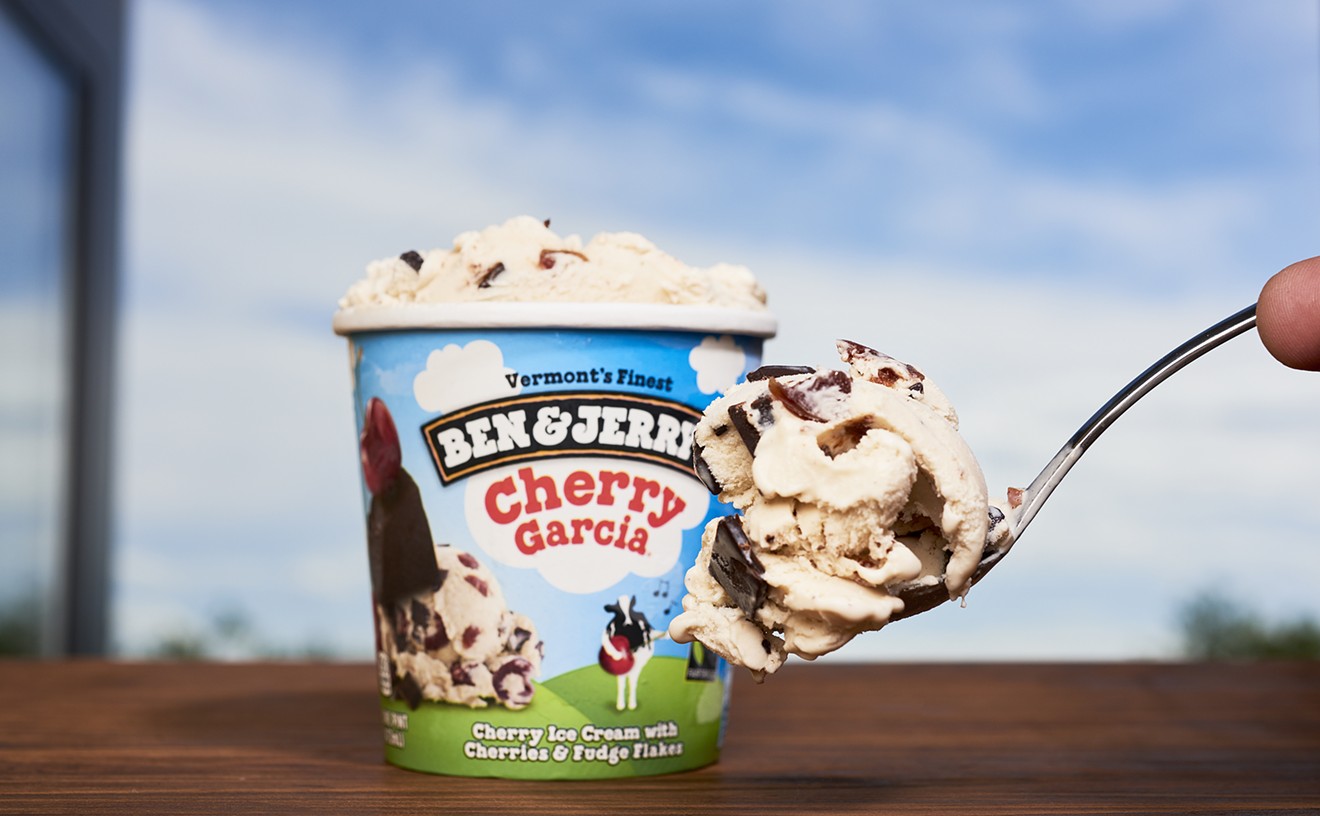But Jose Garcia, captain and manager of La Tasca Espanola, had to stay on his toes with a house this full. And his toes had to be moving pretty fast.
The question of overkill is one few restaurants are prepared to answer and all critics are quick to scoff at. Really and truly, the first positive review occasionally hurts a business as much as it helps. A young restaurant may simply be unprepared to cope with the out-the-door crowds that--amazingly--believe what they read and show up when a critic turns thumbs, or forks, I should say, up. The crowds come, the restaurant is overwhelmed, and the customers leave, angry.
A disappointed patron will seldom give a restaurant a second chance. The last time I spent my own money on a restaurant meal was a lovely, soft spring night, one of the first evenings that made it seem like a wonderful idea to eat outside. But the maitre d' refused to seat us on the restaurant's patio because, he said, it made the restaurant seem "too slow"--when everyone was sitting on the patio, the restaurant looked empty. It was an infuriatingly inept and wrongheaded answer--at the very least, this guy should have made up an elaborate story about the irreparable leak and/or damaged roof that regrettably prevented safe and comfortable seating on the patio and segued into "Would you like a glass of wine?"
Garcia, in contrast, was faced with a genuine crowd, the kind of full house that's a real-life example of the fairy-tale caution to be careful what you wish for, because you may get it.
But his response to the increasingly irritable crowd was always an impeccably cheerful and correct "yes." Whatever you want, yes. If you don't like this wine, I'll bring you another bottle. No problem. If you don't like this table, please take the one you prefer. If you don't like this dish I recommend, I'll take it away and there will be no charge.
Garcia spent years at the Mansion and at Javier's, and his experience with Dallas' success stories shows. His brow may have been a little bedewed, his smile a little frantic, and his gait a little fast, but his determination to please his customers never flagged. He gently herded waiting couples from the bar into the overcrowded dining room and then turned--faintly gasping?--to us, who had arrived, alas, late for a reservation.
He was probably hoping we'd never show up--he could have used all the available space--but we were greeted with a wild-eyed smile and shown quickly to a table where we became the ward of a flat-topped waiter whose white shirt and square spectacles made him look like the host of a Spanish game show in the '50s. (Actually, I guess everyone looked like that in the '50s.) Surprisingly, on our second visit, when things had calmed down a little, Garcia's style was just as accommodating.
La Tasca, in the old Cafe Cancun or Loma Luna space on Lomo Alto, has a dark, cave-like atmosphere, with deeply textured walls. A heavy outlay of plastic grapevines flourishes on the trellis, masking the acoustic tiles. (You know, it's hard to recoup that kind of investment--they say you never get your money back out of plastic foliage.) When it's dark outside, the interior dimness has a certain romance--although the room's open arrangement and the conviviality of the place erases any real possibility of intimate conversation. But for the next few months, or until Daylight Saving Time goes back into hibernation, the brightness outside makes the inside seem merely murky, and slightly depressing.
Still, chiaroscuro is true Spanish style, and La Tasca is Dallas' first full-scale Spanish restaurant. Cafe Madrid is an excellent tapas bar, but it does not serve the range of dishes available from La Tasca's menu. There are tapas, of course, hot and cold, but there are also multiple paellas, seafood, squid, pork, lamb, stews, sherries, ports. La Tasca is Sergio and Monica Olivares' first United States venture, though the duo owns two other La Tascas in Puebla and Mexico City. So, as with so many things Spanish, this restaurant comes to Texas via Mexico. The chefs, Miguel Miguelas from Galicia, Spain, and Manuel Martinez from Dallas, emphasize the triangulation.
There are a number of 14- and 15-dollar Spanish wines on the list, and since I'm always happy to find potable wine for a good price, that's what we drank. The Torres Sangre de Toro was fine (although perhaps it would have been better served in a tumbler, correct context being so important), perfectly drinkable with the full-flavored fare.
If the waitstaff wasn't relaxed, we were certainly prepared to provide the Mediterranean attitude, despite the hour and the crowd, so we naturally started our meal with several tapas. We ordered a plate of three assorted Spanish chorizos: a small intense slice, a large fine-grained sausage, and a large coarser-grained one, each a twist of the kaleidoscope, a different fractal pattern of cured red meat and gleaming white fat flecks. Thin, triangular slices of manchega, the national cheese of Spain, were fanned on a plate; the nutty, faintly sweet stuff, not far from Parmesan but creamier, was slicked with olive oil and herbs. Soft nuggets of sweetbread, fine-grained as silk velvet and sheerly crusted, came mixed with chunks of mushrooms, the spores coarser than the glands, in a jus of mushroom and meat. A fabulous island of soft goat cheese (Spanish, flown in from California) was served melting into the best marinara I've ever tasted, each spoonful requiring full sensory capacity of the nose and mouth to appreciate the sweet, the herbal, the tang and the salt that were all components of this sauce.
All these tapas required bread, the basic flavor backdrop as essential to this food as scenery is to action. Instead--a sad mistryst in our dinner drama--we were brought soft white bread, as cool as though it had just come from the fridge, served with four pitty-pats of butter at a time, a pallid and pitiful accompaniment to the lusty meat and cheese. How we longed for some coarse, yeasty slices of country bread, a crisp-crusted loaf to tear off and sandwich the chorizo and cheese, to sop up the garlic jus from the quartered mushrooms and polish the red marinara from the white bowl. Two crisp toasts came with the goat cheese, but it was neither substantial enough, nor enough.
Fortunately, everyone's favorite tapa, tortilla Espanola, stands alone, without bread. The delicate, napoleon-like cake of paper-thin potatoes, adhered to one another in a stack with omelet, was an excellent example of earthy ingredients finessed to elegance, which is the perfect Spanish style, a sort of chiaroscuro-like contrast in the mouth.
The best main courses accomplished the same unlikely marriage. Slices of simply grilled marinated pork, its exterior spiced and sliced on the diagonal to ensure its fork-tenderness, came with tiny sliced grapes and a dip of sweet sauce, sided with lightly stewed zucchini and background-bland sliced potatoes. The Asturian stew of big flat fava beans, more texture than taste, were seasoned and completed with chorizo, the beans' dependability and stalwartness given a luxurious sheen by the rich sausage. Gambas romescu, big shrimp in a garlic-butter sauce, and Cordera riojana, four lamb chops sauced with a sherry sauce saved from sweetness by pimientos, were tender and delicious.
And paella Valenciana, the most popular of the paellas, was properly served in its special wok-like paella pan, with whole red shrimp, black mussels, pieces of browned chicken breast, pale clams, vegetables, and bright green peas scattered like fallen fruit over the saffron rice. (La Tasca also offers a vegetarian paella, a seafood-only paella, and an extravagant paella of rabbit, lamb, and mushrooms.)
But a few dishes on our second visit missed the mark. We were told that the fish of the day, served with a green tomatillo-tangy sauce, was snapper, but this piece of fish was so coarse and dry, as though it had been thawed too fast, that we wondered. The salsa verde was a one-note wonder and did nothing for the fish except wet what should have been moist already. And several of the desserts were disappointments, including a refrigerator-burned chocolate cake and the provocatively named secretos dulces de la Tasca ("sweet secrets"), which turned out to be a couple of sweet, dry cookie-like concoctions filled with ground apricots and nuts, reminding us that the Moors, who still know nothing about desserts, ruled Spain for generations.
But the flan de la casa, a round of custard only as sweet as milk, was served with a really dark caramel sauce, finishing the meal on the same note of Spanish light and dark contrast, literally.
La Tasca Espanola, 4131 Lomo Alto, (214)599-9563. Open for lunch Monday-Friday 11 a.m.-2 p.m., for dinner Monday-Thursday 5-10, Friday 5 p.m.-11 p.m., Saturday 5 p.m.-11 p.m.
Tortilla Espanola $3.25
Chorizo Espanoles $4.75
Casuela de Queso de Cabra $5.50
Paella Valenciana $14
Gambas Romescu $9
Fabada Asturiana $8
Cordero Riojana $14.50
Solomillo de Cerdo con salsa de Uvas Confitadas $14.50
Flan de la Casa $3.50










